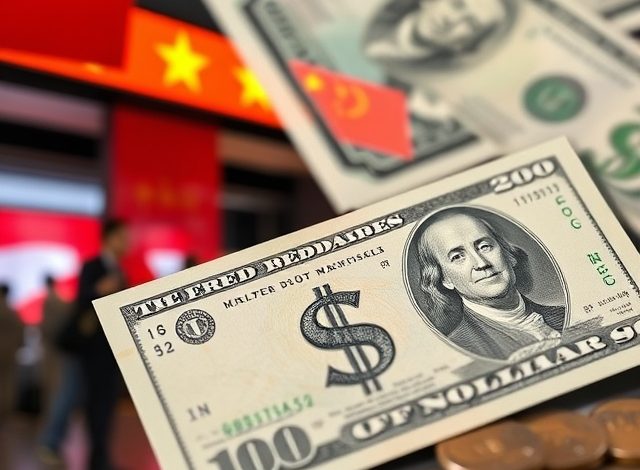China trade data weighs on dollar: US dollar rises, Australian dollar falls

The dollar rose on Tuesday ahead of U.S. inflation data that could offer clues about the Federal Reserve’s monetary easing path, while analysts assessed the potential impact of President-elect Donald Trump’s policies as he begins his second term.
The Australian dollar fell sharply against the U.S. dollar as the Reserve Bank of Australia softened its tone on inflation expectations. It also pared a rally the previous day sparked by Chinese stimulus pledges after weak Chinese trade data.
Financial markets are pricing in an 86% chance of a 25 basis point rate cut by the U.S. Federal Reserve next week, but investors will still be closely watching Wednesday’s expected reading of consumer price index data.
“The market is clearly a bit nervous about a stronger print, which could lead to a slightly more hawkish Fed outlook, or perhaps a bit of a repricing,” said Brad Bechtel, global head of monetary policy at Jefferies. “I think the market is looking to see if CPI will influence the decision at the December meeting, which is now close to 100% of the target, but not 100%.”
The US dollar rose 0.47% to 151.925 yen. The dollar index, which measures the currency against the yen and five other major currencies, was up 0.23% at 106.4.
Market participants see little movement ahead of a busy second half of the week with US data and the European Central Bank’s policy meeting.
The ECB is set to cut interest rates by a quarter percentage point, but investors will focus on the communications, which could provide clues about the central bank’s future moves.
The euro fell 0.27% to $1.0526.
The Australian dollar fell 0.93% to $0.6381, having earlier fallen to its lowest since August.
It rose 0.8% the previous day after China pledged to keep monetary policy “appropriately accommodative” next year.
“If we can get Chinese stocks up, and China-sensitive commodities like copper up, that could push the US dollar down a bit. You can feel there’s a lot of pressure there to do something,” said Eric Brigard, head of foreign exchange and precious metals risk at Silver Gold Bull.
China’s exports grew at a slower pace in November, while imports unexpectedly contracted, weighing on the outlook for the Australian economy, where China is its biggest trading partner.
Chinese stocks pared gains while Hong Kong shares fell as initial optimism over Beijing’s policy shift faded.
The Reserve Bank of Australia kept interest rates steady as expected, but indicated the board had gained “some confidence” that inflation was heading back to target.
“The full pricing (of rate cuts) over the next few weeks should weigh on the Australian dollar,” said Volkmar Bauer, foreign exchange strategist at Commerzbank (ETR:CBKG), noting that two reports on the labour market and fourth-quarter inflation figures are due before the next policy meeting in February.
The New Zealand dollar fell in sympathy with the Australian dollar, falling 1.1% to $0.5801.
Investors will be closely watching China’s closed-door central bank economic work conference this week, which sets out key targets and policy intentions for the year ahead.
The yuan was last at 7.2602 per dollar in offshore trade, supported by Monday’s surprise shift in Beijing’s monetary policy stance towards further easing to boost the ailing economy.
Elsewhere, the Bank of Canada and the Swiss National Bank are set to decide on policy on Wednesday and Thursday respectively, with both expected to cut interest rates aggressively.
Against the Canadian dollar, the US dollar rose to its strongest since April 2020 at C$1.4165.